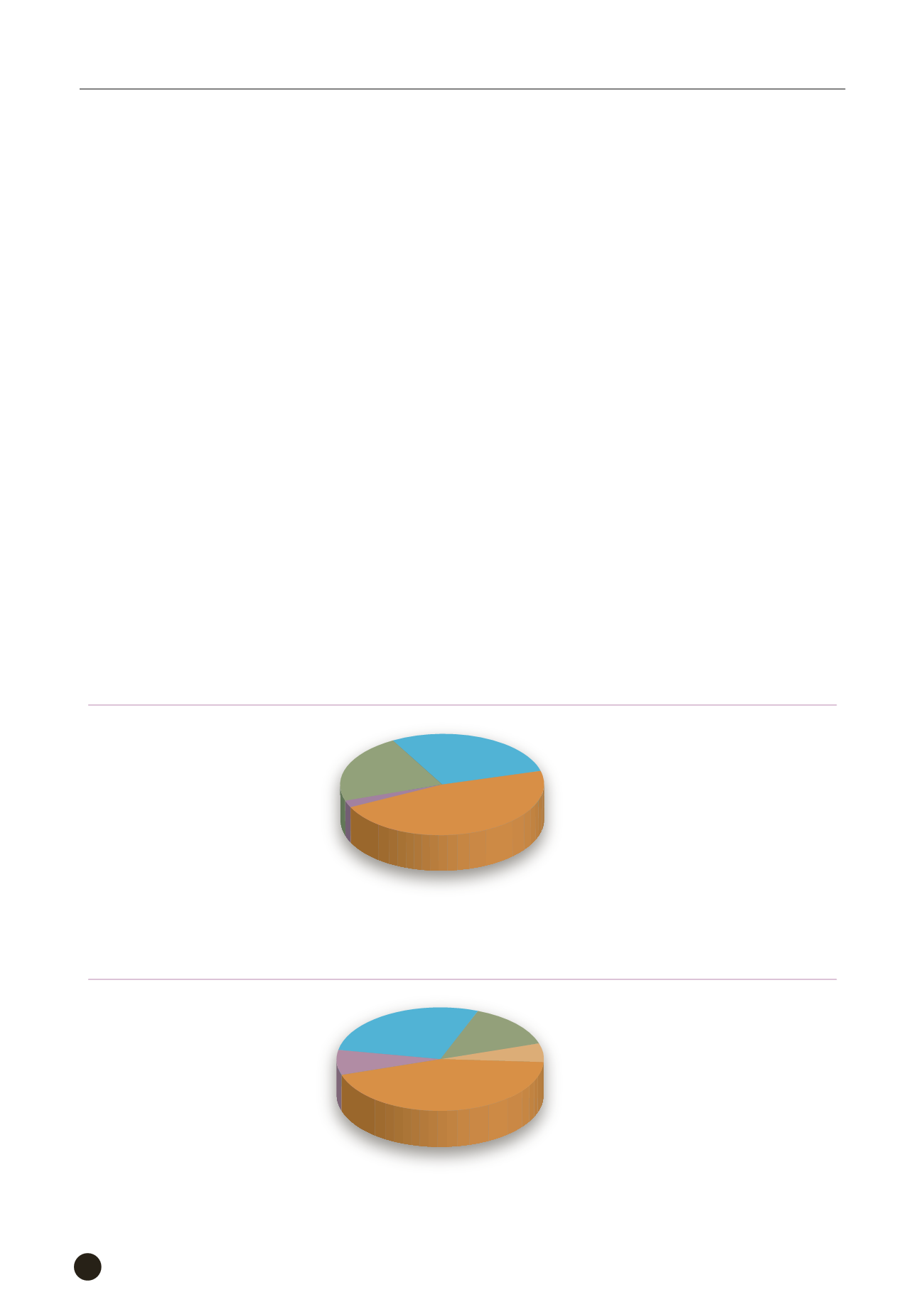

64
For 2011 – 2015 TaiwanICDF Fund income and
expenditure structure and figures, please refer to
Figures 4 to 6.
Fund Utilization and Balance
As of December 31, 2015, the net balance of the
Fund was NT$ 15.78 billion (including founding and
donated funds of NT$ 12.47 billion, accumulated earnings
of NT$3.32 billion and unrealized gains on financial
instruments of NT$4.87 million). This represents an
increase of NT$ 54.15 million, or 0.34 percent, from 2014.
As of December 31, 2015, total assets stood at NT$
16.35 billion, of which current assets comprised 52.78
percent, long-term investments and loans 46.97 percent,
fixed assets 0.15 percent and other assets 0.10 percent.
The organization’s total liabilities were NT$ 563.24
million and the total balance of all funds (the Fund plus
accumulated earnings) was NT$15.78 billion.
Other 22%
...................................
Cash Dividends 2%
.....................
Interest on Fund Investments 47%
....................
29% Lending and Investment
.............................
Lending and Investment 8%
................
Management and
General Affairs 44%
...............................
14% Technical Cooperation
...........................
6% Humanitarian Assistance
.........................
International Education
and Training 28%
..................................
Figure 4 Fund Revenue (2015)
Figure 5 Fund Expenditure (2015)
Budget Execution
In 2015, the MOFA contracted the TaiwanICDF to carry
out overseas operations worth NT$ 1.26 billion. Overall,
the total budget for MOFA-commissioned projects was
NT$ 1.23 billion and the implementation rate was 95.29
percent.
Operating expenses (excluding expenses for
contracted projects) amounted to NT$ 314.89 million. This
compares with a budgeted plan of NT$ 477.22 million,
equal to a utilization rate of 65.98 percent. This result
was due to the implementation of cost-saving measures
this year (2015) to achieve a balance between the
organization’s revenues and expenditures.


















